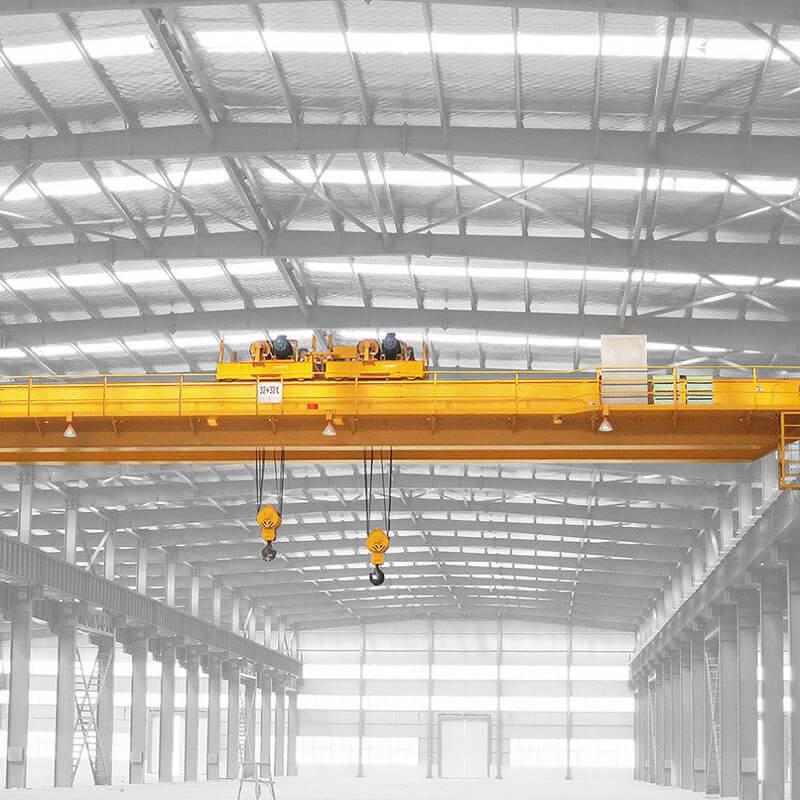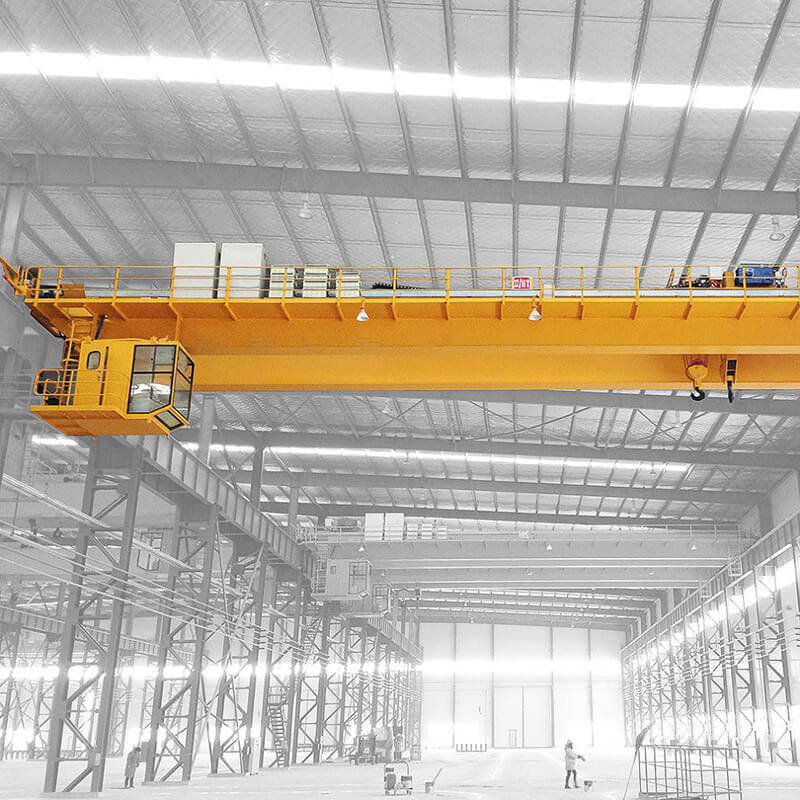General requirements for Crane factory operators
a. The command signal should be clear and meet the regulations;
b. When hanging, the angle between the hanging ropes should be less than 120 degrees to avoid excessive stress on the hanging ropes;
C. The edges and corners of the rope and chain should be lined;
d. When the command object is turned over, its center of gravity should be changed steadily, and no actions other than the command's intention should be generated;
e. When entering under the suspended weight, you should first contact the driver and set up a direct support device;
f. When multiple people are tied up, one person should be in charge of directing.
4. Safety inspection and inspection cycle requirements
(1) The crane shall be inspected and qualified according to relevant standards in the following situations:
a. For cranes that are working normally, once every two years;
b. Cranes that have been overhauled, newly installed and remodeled, before being delivered to use;
c. Cranes that have been idle for more than one year before being reused;
d. After storms, earthquakes and major accidents, cranes that may damage the strength, rigidity, stability of components, and the importance of the mechanism.
(2) When the work is heavy and the environment is harsh, the regular inspection cycle shall not be less than once a month, and the regular inspection cycle shall not be less than once a year.
Crane safety technical requirements
(1) When operating, the driver shall comply with the following requirements:
a. It is not allowed to use the limit position to stop the parking directly;
b. Do not adjust the brake of the lifting and luffing mechanism under load;
c. When hoisting, it is not allowed to pass over people, and no one is allowed under the boom;
d. When the crane is working, inspection and maintenance are not allowed;
e. When the weight to be hoisted is close to or reaches the rated lifting capacity, check the brake before hoisting, and after hoisting with a small height and short stroke, then hoist it steadily;
f. For cranes with no down limit straight stopper, when the hook is at the lowest working position, the steel wire rope on the drum must maintain the number of safe turns specified by the design;
g. When the crane is working, the minimum distance between the boom, the spreader, the steel wire rope, the cable wind rope and the heavy objects and the transmission line shall not be less than the provisions of Table 2;
h. For mobile cranes, the parking area should be leveled according to the requirements of the manual before work, and the outriggers should be firmly and reliably laid;
I. For cranes without reverse connection braking performance, except for special emergencies, it is not allowed to use the reverse vehicle to brake.
(2) The driver should not operate in one of the following situations:
a. Overloading or unclear object weight, such as lifting and pulling straight buried objects with unclear weight or unclear tension, and oblique pulling and oblique hanging, etc.;
b. The structure or parts have defects or damages that affect the safe work, such as the brake safety installation failure, the hook nut is damaged due to the loose installation, and the wire rope damage reaches the scrap standard, etc.;
c. The binding and hanging are not firm or unbalanced and may slide, and there is no liner between the corners of the weight and the wire rope;
d. There are people or floating objects on the suspended object;
e. The work site is dim, and it is impossible to see the site, the situation of the suspended object, and the command signal.
(3) When two or more cranes are used to lift the same heavy object, the wire rope should be kept vertical, and the lifting and running of each crane should be kept synchronized. The load on each crane must not exceed their respective rated lifting capacity. If the above requirements are not met, the rated lifting capacity should be reduced to 80%; it can also be used by the chief engineer to reduce the rated lifting capacity according to the actual situation. When lifting, the chief engineer should be present to guide.
(4) For cranes with two sets of main and auxiliary lifting mechanisms, the main and auxiliary hooks should not be activated at the same time, except for special cranes that are designed to allow simultaneous use.

General requirements for safe operation of cranes
a. When the driver takes over, check the brakes, hooks, wire ropes and safety devices. If the performance is found to be abnormal, it should be eliminated before operation;
b. Before driving, you must ring the bell or alarm. When approaching people during operation, you should also give an intermittent bell or alarm;
C. The operation should be carried out according to the command signal, and the emergency stop signal should be executed immediately regardless of who sends it;
d. When it is confirmed that there is no one on or around the crane, the main power can be turned on. For example, when the power circuit breaker is locked or there is a sign, the main power can be turned on after being removed by the relevant personnel;
e. Before closing the main power supply, all the puller handles should be set to the zero position;
f. When there is a sudden power failure during work, all controller handles should be pulled back to the zero position. Before restarting work, check whether the crane movement is normal;
g. For cranes operating in the open air on the track, the crane should be anchored when the work is finished. When the wind force is greater than level 6, work should generally be stopped and the crane should be anchored. For gantry cranes and other cranes that work along the coast, when the wind force is greater than 7, the work should be stopped and the crane should be anchored;
h. When the driver is performing maintenance, he should cut off the main power supply and put up a warning sign or lock it. If there is an unremoved fault, the driver should be notified.
What Should Be Paid Attention To During The Operation Process Of The Crane

没有评论:
发表评论